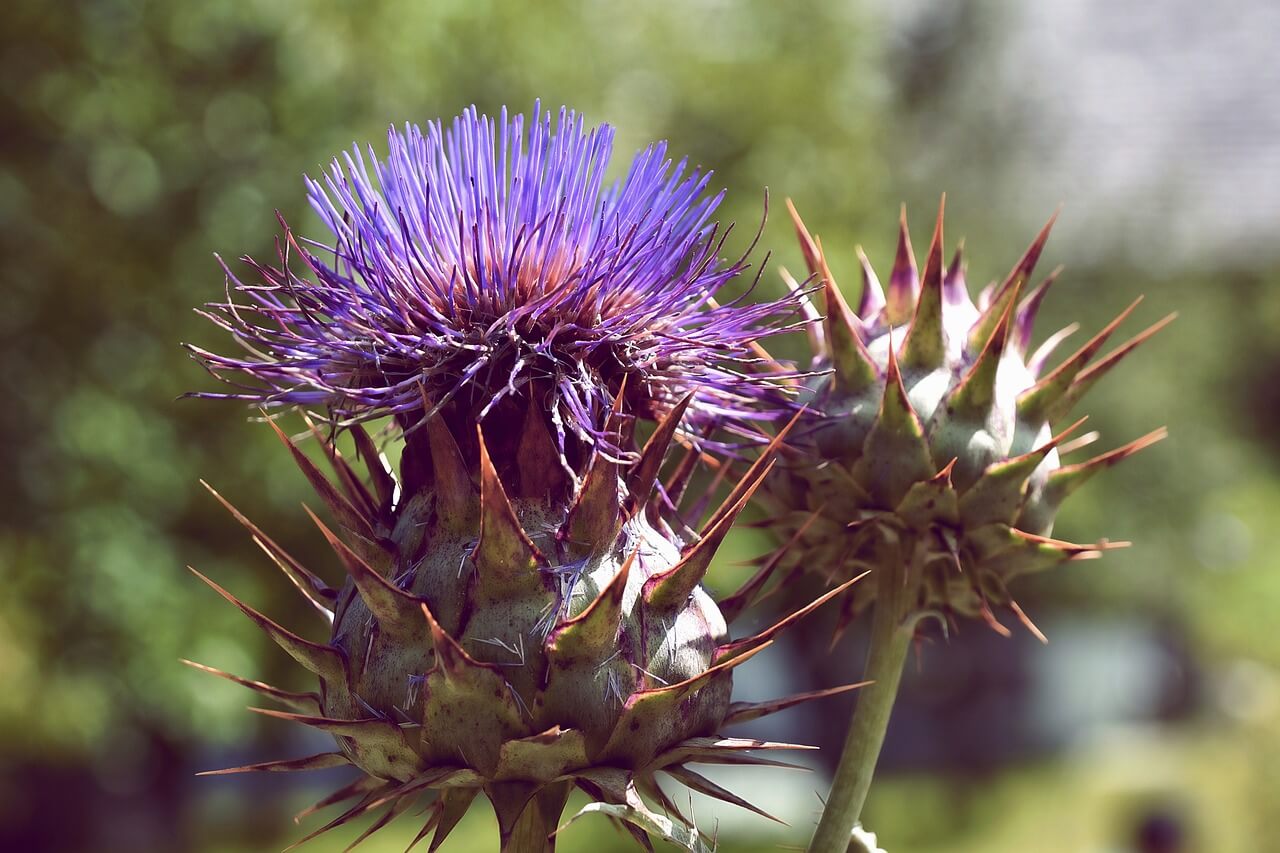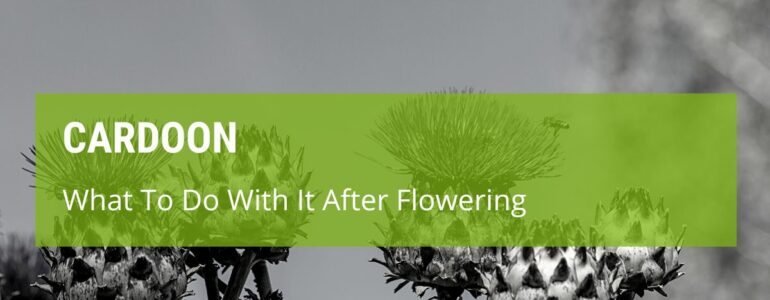Cardoon is a showy, gorgeous plant which you can grow for purely ornamental reasons, or you can eat the plant. But what to do with cardoon after flowering?
Don’t worry, we’ve got you covered! For anything and everything you need to know about what to do with cardoon once those flowers are done, read on for our best tips.
What To Do With Cardoon After Flowering?

If you have eaten all the flowering heads then you can just follow up with eating the stems – this is a very versatile plant!
If you wanted to leave the heads on for that ornamental look, or you have cut them for flower displays, you may be at a loss of what to do…
The answer is, you don’t really need to do anything! The whole plant will wither and die off before the winter, releasing its nutrients into the soil.
Leaving it to die off naturally is a form of “green manure” that will naturally release nutrients into the soil from the dying plant.
If you don’t like the look of a dying plant around the place, you can simply uproot the whole thing and throw it in the compost.
There’s no real need to worry about what happens next year, because cardoon is a perennial that will pop back up in spring as long as the winter hasn’t been too harsh.
How To Harvest Cardoon?
Cardoon is a great plant to have around – whether for its aesthetics or its taste. How and when to harvest things can be tricky, and cardoon has an extra step in its harvesting!
- Cardoon is generally grown for its young leaves, which are edible and delicious. They are generally ready between 120 and 150 days after harvesting.
- 3-4 weeks before you harvest, so in October or November, you will need to “blanch” the plant by wrapping it in sacks or cardboard about 18 inches up the stems.
- This extra step makes the leaves more tender, and helps to remove some of their bitter taste.
- When you are ready to harvest, remove the coverings and cut the stalks off at ground level.
- Make sure you are wearing gloves – the spines on the edges of cardoon’s leaves are small, but they can be painful!
- Trim off any excess leaves from the stems, and give them a good wash to remove soil and creepy crawlies.
- Wrap the stems in paper (plastic can make them sweat, then rot) and store them in the fridge, where they will keep for up to 2 weeks.
Here is a video which will show you the best way to harvest cardoon:
Can You Use Cardoon Flowers?
There are a lot of flowers that are ornamental as well as edible – think of marigolds, nasturtiums, borage – the list goes on!
Because the cardoon is related to the artichoke, you may be thinking that you can eat the flowers… And you’d be right!
The unopened flower heads can be eaten just as you would an artichoke. They may not be quite as big, but you can certainly enjoy a delicious snack!
As well as eating them, cardoon flowers can be used in displays too – and they are truly stunning, eye catching cut flowers.
You can also save the seeds from cardoon flowers, if you let them fully mature, so that you will always have a supply of this lovely plant.
In Portugal, the dried flowers of cardoon are used as a rennet, a curdling agent in traditional cheese making. Great for your vegan friends!
Whatever you plan to do with your cardoon flowers, just make sure you watch out for the spines as these can be a little painful!
Can You Eat Cardoon Heads?
The short answer to this is yes, you can eat cardoon heads. While they are definitely better with a little preparation, it won’t do you any harm to nibble on a flower or two as you’re strolling around the garden!
Because this plant has spines, watch your hands and your mouth if you are planning on tasting this one without cooking it first.
Cardoons are generally used in culinary purposes for their stems, but you can also use the flowers as an artichoke substitute.
Cardoon flowers are much smaller than their artichoke cousins so you may need to gather more, or simply use them in a small dish like a starter.
The preparation of cardoons and artichoke hearts is identical – basically you want to boil them until they’re soft, then you can peel away the outer leaves and munch on the delicious heart.
What Are The Benefits Of Cardoon Leaves?
So, you’ve grown this flashy plant for its striking flowers and silvery leaves – now the flowers are over, whet do you do with the leaves?
It’s always been said that things which taste bitter are good for the liver – and this is also true of cardoon!
The leaves contain cynarin, which is a bitter-tasting compound found in the leaves of many green vegetables – cardoon included.
Cynarin stimulates the digestive juices, making it easier to digest your food, and it can also improve the function of the liver and gall bladder.
The leaves of this amazing plant can also help to reduce blood cholesterol levels, making it a very healthy one to have around.
It is best to harvest the leaves just before the plant flowers, for the best taste and most health benefits.
As you can see, there’s more to a cardoon than just its flowers! In fact, here’s a great article explaining it in even more depth.
Final Thoughts
Isn’t it great to have a plant that is not only beautiful, but can be used for eating and displaying too?
Cardoon is one of these wonderfully versatile plants. Once it’s flowers are over, you can still enjoy the plant – and get ready for it to pop back up again next year!






